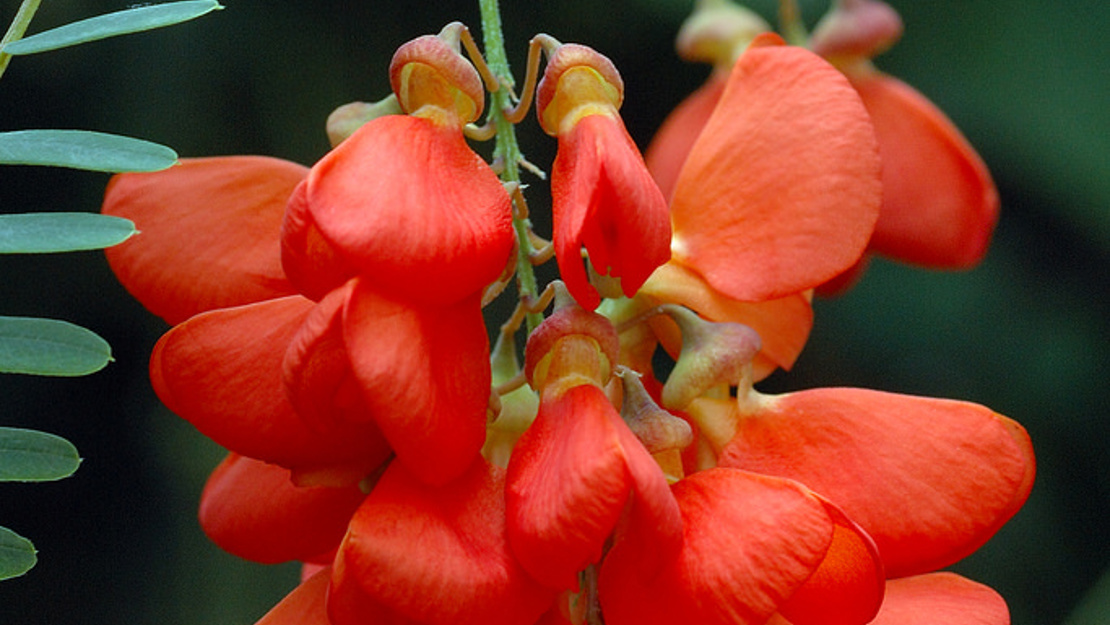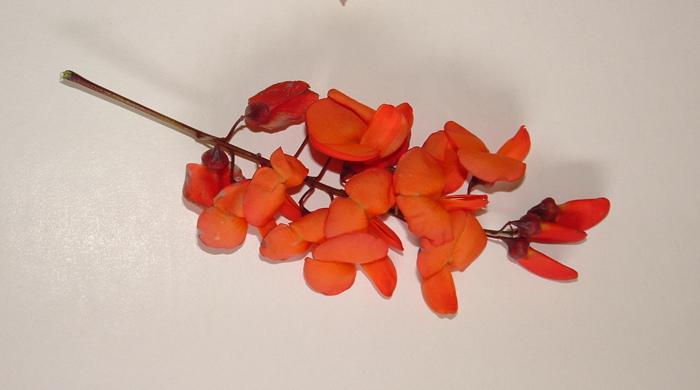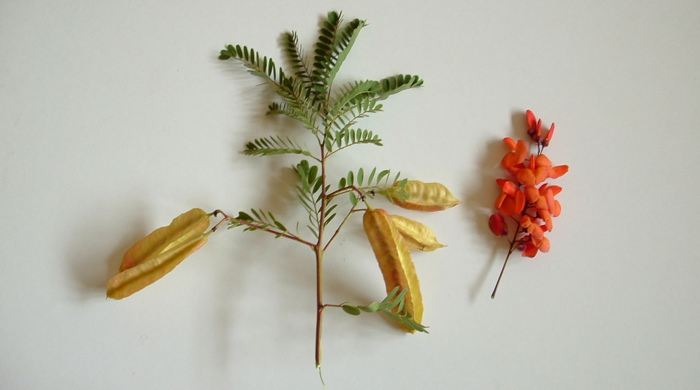Sesbania punicea
Brazilian rattlebox
Family: Fabaceae
Origin: South America

Regional Pest Management Plan (RPMP) status
- Aotea — Exclusion
- Hauraki Gulf Controlled Area Notice pest
- Whole region — Sustained control
General description
Deciduous shrub or small tree. Roots are nodulated. Leaves are compound and pinnate. Flowers are red/orange and are borne in showy inflorescences late spring – autumn. Seed pods are longitudinally winged.
What you need to know
To help protect our environment, from 1 September 2021:
- you must not breed, distribute, release or sell Brazilian rattlebox on Aotea/Great Barrier Island group
- you must not plant Brazilian rattlebox on Aotea/Great Barrier Island group.
After the RPMP has been operational for one year, you:
- will not be allowed to breed, distribute, release or sell Brazilian rattlebox within the Auckland region
- will not be allowed to plant Brazilian rattlebox within the Auckland region, unless you are transferring an existing plant on your land to another location within the boundaries of the same property
- must destroy any Brazilian rattlebox on land that you occupy if it has been planted in breach of the above rules and you are directed to do so by an authorised person.
If you see Brazilian rattlebox on Aotea/Great Barrier Island group, please report it to Auckland Council at pestfree@aucklandcouncil.govt.nz.
Habitats
Seasonally inundated habitat, perennial wetlands and watercourses, forest, scrub, pasture.
Dispersal
Seeds dispersed by water and gravity. Human-mediated dispersal through soil movement and deliberate plantings.
Impact on environment
Forms dense stands, excluding native vegetation. In watercourses it can impede water flow, exacerbate flooding, bank destabilisation and erosion, and impede human access. Nitrogen fixer.
Control
Site management
Follow up treated areas 3 times per year. Encourage natural regeneration of native plants or replant treated areas where possible after 2-3 treatments to establish dense ground cover and minimise reinvasion.
Recommended approaches
Physical control
Method: Dig out.
Plant parts requiring disposal: Seeds.
Disposal options: Remove to greenwaste or landfill if practical.
Biocontrol
Biocontrol is currently not available for this species.
Community agrichemical control recommendations
No qualifications: Cut stump and paste freshly cut base of stems with metsulfuron gel.
Basic Growsafe certified: Cut stump and spray freshly cut base with 1g metsulfuron-methyl per 1 L of water.
Certified Handler/Experienced agrichemical user:
Drill and inject trees with 10g metsulfuron-methyl per 1L of water if safe to do so. Drill 18mm holes (tangentially angled downwards) in a spiral up the trunk.
For 50mm stems drill one hole. For 100mm stems drill two holes. For larger stems drill holes 150mm apart.
Foliar spray seedlings with 5g metsulfuron-methyl per 10L of water and 20ml penetrant
Caution: When using any herbicide or pesticide please read the label thoroughly to ensure that all instructions and safety requirements are followed.





